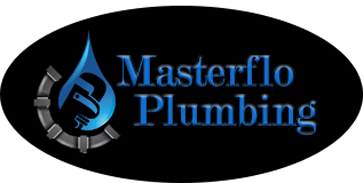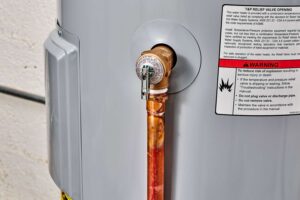When dealing with a clogged kitchen sink, start by pouring boiling water down the drain and then using a mixture of baking soda and vinegar to break down the clog. A plunger can help create pressure to push through the blockage effectively. Boiling water poured down the drain can also work wonders to clear the way. For tougher clogs, consider using a drain snake or a mix of salt and hot water. These methods will get things flowing smoothly in no time!
Key Takeaways
- Use baking soda and vinegar for a natural, fizzing action to break down clogs effectively.
- Plunge with a tight seal for pressure to dislodge blockages efficiently.
- Boil water and pour down the drain to clear minor clogs quickly.
- Employ a drain snake to physically break up and remove stubborn clogs.
- Try salt and hot water as a natural, environmentally friendly alternative for clearing sink blockages.
Baking Soda and Vinegar Method
If your kitchen sink is clogged, try using the popular Baking Soda and Vinegar Method to effectively clear the blockage. Start by pouring boiling water down the drain to help loosen any greasy substances. Then, pour half a cup of baking soda followed by half a cup of vinegar. The mixture will fizz and bubble, working to break down the clog. Cover the drain with a plug or cloth to contain the fizzing action within the pipe. Let it sit for about 30 minutes to allow the solution to work its magic on the blockage.
After the waiting period, flush the drain with hot water to wash away the loosened debris. You may need to repeat the process a few times for stubborn clogs. This method is effective for minor clogs caused by grease, food particles, or soap scum. However, for more severe blockages, you may need to use a plunger or a plumbing snake.
Plunger
Utilize a plunger as a practical tool to dislodge stubborn clogs in your kitchen sink effectively. Plungers work by creating pressure to push through and break up the blockage causing the clog. To use a plunger correctly, make sure there is enough water in the sink to cover the rubber end of the plunger. Position the plunger over the drain, ensuring it forms a tight seal. Push the plunger up and down vigorously to generate the pressure needed to dislodge the clog. Repeat this motion several times until the water starts to drain freely.
When using a plunger, it's crucial to choose the right type for the job. A standard cup plunger is suitable for sinks, while a flange plunger is better for toilets. Keep a dedicated sink plunger for kitchen use to prevent cross-contamination. Remember to clean the plunger thoroughly after each use and store it in a dry place to maintain its effectiveness.
Boiling Water
To tackle tough clogs in your kitchen sink, consider using boiling water as a simple and effective method. Boiling water can be a powerful tool in your arsenal against blockages, especially those caused by grease or soap residue. The heat from the boiling water can help to break down these substances, making it easier for them to flow down the drain.
Before starting, remove as much standing water from the sink as possible. Then, bring a pot of water to a rolling boil on the stove. Carefully pour the boiling water directly down the drain in a slow and steady stream. Be cautious not to splash yourself with the hot water.
Allow the boiling water to work its magic for a few minutes before testing the drain. If the water is draining more freely, you may have successfully cleared the clog. For tougher blockages, you may need to repeat the process or consider using a different method, such as a drain snake.
Drain Snake
Consider using a drain snake to tackle stubborn clogs in your kitchen sink effectively. When plungers and hot water fail to clear the blockage, a drain snake, also known as a plumber's snake or an auger, can be your next best solution. This tool is designed to go deep into your pipes and break up the clog, allowing water to flow freely again.
To use a drain snake, start by inserting the tip into the drain opening and turning the handle clockwise. As you push the snake further into the pipe, you may encounter resistance from the clog. By turning the handle and applying gentle pressure, you can break through the blockage and pull it out. Remember to work slowly and carefully to avoid damaging your pipes.
Drain snakes are available at most hardware stores and come in different lengths to accommodate various pipe depths. They are a cost-effective and environmentally friendly way to unclog your kitchen sink without resorting to harsh chemicals. Next, let's explore another effective method using salt and hot water.
Salt and Hot Water
When facing a stubborn clog in your kitchen sink that resists traditional methods like plungers and hot water, a simple yet effective alternative involves using a combination of salt and hot water. This method can help break down the clog and clear your drain effectively.
- Step 1: Pour a pot of hot water down the drain to soften the clog.
- Step 2: Follow up by pouring half a cup of salt into the drain.
- Step 3: Let the salt sit in the drain for a few minutes to work on the clog.
- Step 4: After allowing the salt some time, flush the drain with another pot of hot water.
- Step 5: Repeat the process if necessary until the clog is cleared.
Using salt and hot water is a natural and environmentally friendly way to tackle clogs in your kitchen sink. Give this method a try before moving on to harsher chemicals or calling a plumber.
Dish Soap and Hot Water
Looking to tackle a kitchen sink clog effectively without resorting to harsh chemicals or professional help? Try using dish soap and hot water. This simple method can often break down grease and grime causing the clog, allowing water to flow freely again.
To start, squirt a generous amount of dish soap down the drain. The soap works to lubricate the clog, making it easier to move. Follow this up by pouring hot (but not boiling) water down the drain. The hot water helps dissolve the grease and soap residue that may be blocking the pipe. Let the soapy, hot water sit in the drain for about 5-10 minutes.
After letting it sit, turn on the faucet to see if the water drains properly. If it's still slow, repeat the process or try another method. Dish soap and hot water are gentle on your pipes and won't cause any damage, making it a safe and eco-friendly option to try first when dealing with a clogged kitchen sink.
Wet/Dry Vacuum
Using a wet/dry vacuum can be an effective way to unclog a kitchen sink without the need for harsh chemicals or professional assistance. This method makes use of the suction power of the vacuum to dislodge and remove blockages in the pipes. Here are some steps to help you unclog your kitchen sink using a wet/dry vacuum:
- Prepare the Vacuum: Make sure the vacuum is set to the liquid pickup mode.
- Seal the Vent: If you have a double sink, seal the drain on one side before using the vacuum on the clogged side.
- Create a Seal: Use an old plunger head or a rubber adapter to create a seal around the drain opening.
- Apply Suction: Turn on the vacuum and place the nozzle over the drain opening to create suction.
- Repeat as Needed: Continue the process of applying suction and releasing it until the clog is cleared.
Conclusion
Masterflo Plumbing is North Georgia's most trusted plumbing company. With over 20 years of experience and staffed with master plumbers, our team is equipped and ready to serve your plumbing needs. Whether you require water heater repair or replacement, or have minor and major plumbing issues, you can rely on Masterflo Plumbing for all your plumbing needs in Cherokee County and metro Atlanta.


